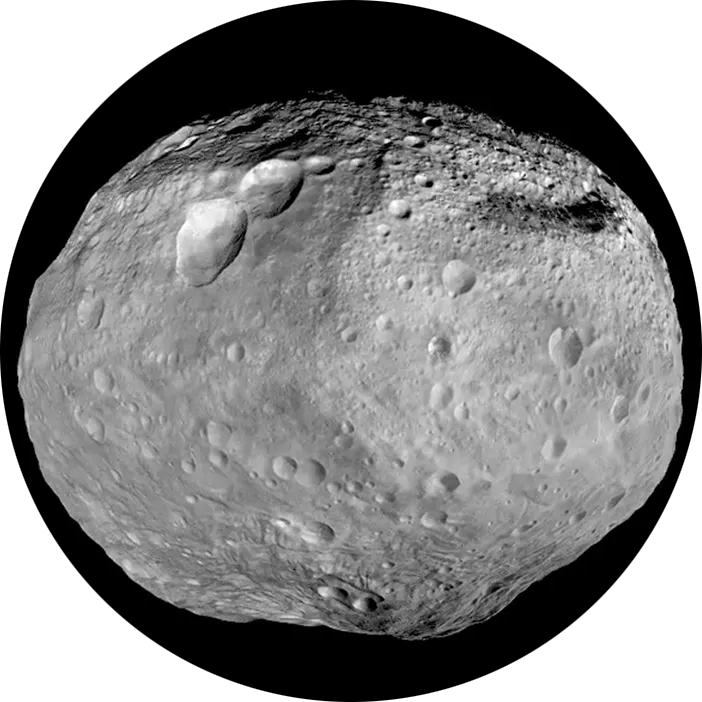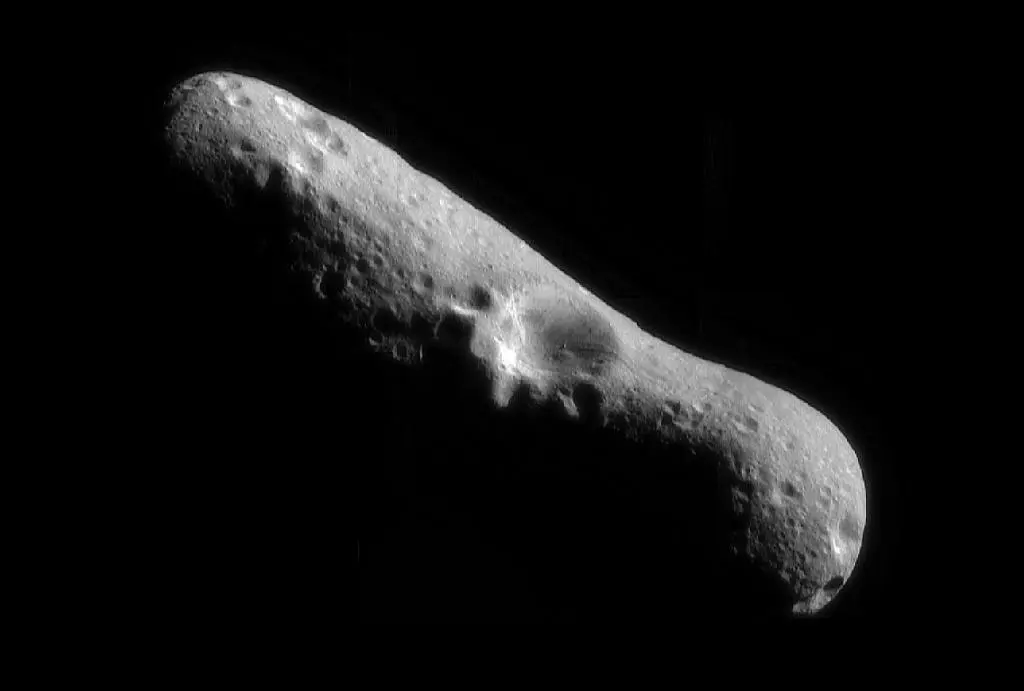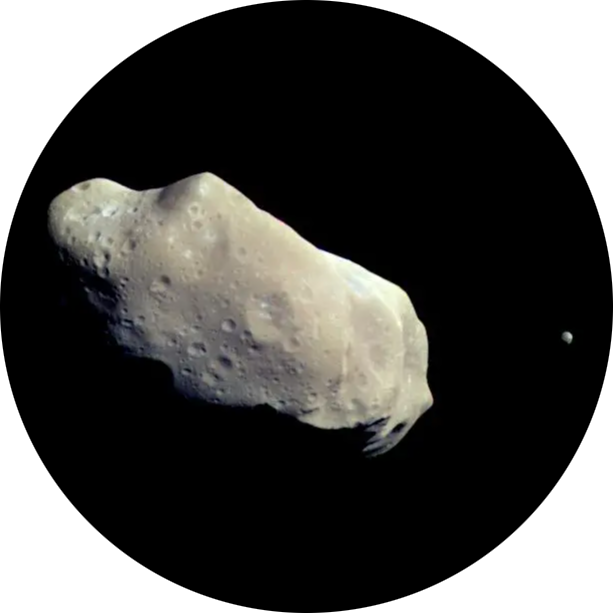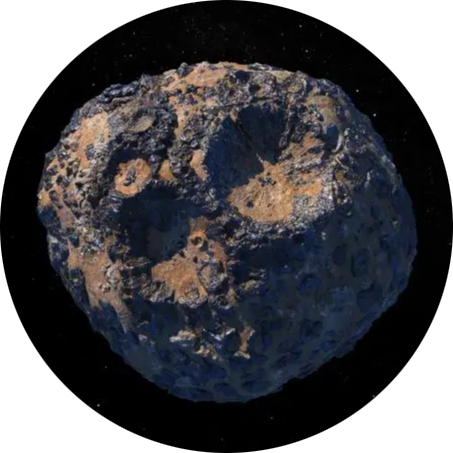
Psyche
One of the most intriguing objects in the main asteroid belt, Psyche is a giant metal rich asteroid, about three times farther away from the Sun than is Earth. Psyche has an irregular, potato-like shape. If it were sliced in half horizontally at the equator – picture a squished oval – it would measure 173 miles (280 kilometers) across at its widest point and 144 miles (232 kilometers) long. Its surface area is 64,000 square miles (165,800 square kilometers). Up until recently, the scientific consensus was that the asteroid Psyche consisted mostly of metal. The more recent data indicates that the asteroid is possibly a mix of metal and silicate, the same material found in glass and sand. The best analysis indicates that Psyche is likely made of a mixture of rock and metal, with metal composing 30% to 60% of its volume. The asteroid’s composition has been determined by radar observations and by the measurements of the asteroid’s thermal inertia (how quickly an object gains or re-radiates heat). By combining radar and optical observations, scientists generated a 3D model of Psyche that shows evidence of two craterlike depressions. It suggests that there is significant variation in the metal content and color of the asteroid over its surface. But until NASA's Psyche mission sees the asteroid Psyche up close for the first time, we will not know what it actually looks like.
Bennu
Bennu is a small, near-Earth asteroid that passes close to Earth about every six years. It was the target of NASA's OSIRIS-REx mission to collect an asteroid sample and bring it to Earth.
Bennu is a carbon-rich asteroid that is about one-third of a mile (half a kilometer) wide at its equator. An ancient relic of our solar system’s early days, asteroid Bennu has seen more than 4.5 billion years of history. Scientists think that within 10 million years of our solar system’s formation, Bennu’s present-day composition was already established. Bennu likely broke off from a much larger carbon-rich asteroid about 700 million to 2 billion years ago. It likely formed in the main asteroid belt between Mars and Jupiter, and has drifted much closer to Earth since then. Because its materials are so old, Bennu may contain organic molecules similar to those that could have been involved with the start of life on Earth. Bennu’s average orbital distance from the Sun is about 105 million miles (168 million kilometers), which is only slightly farther than Earth’s average orbital distance of 93 million miles.
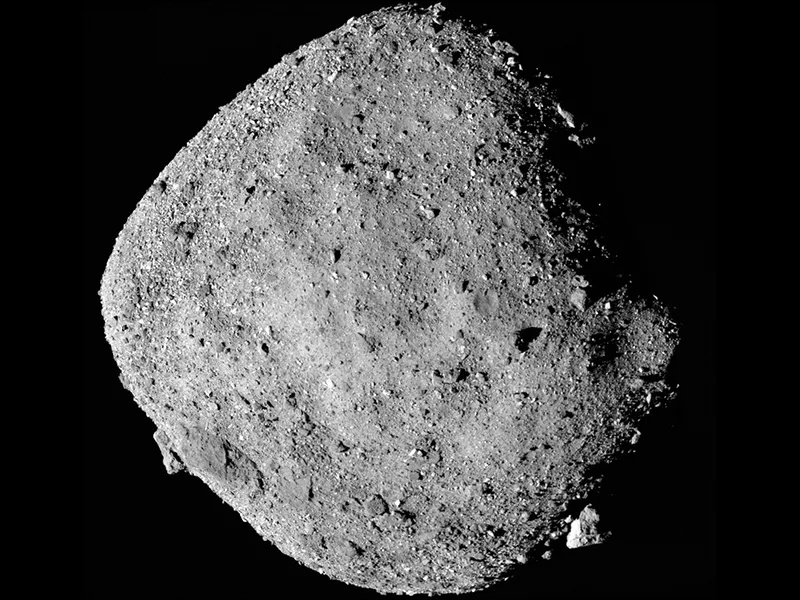
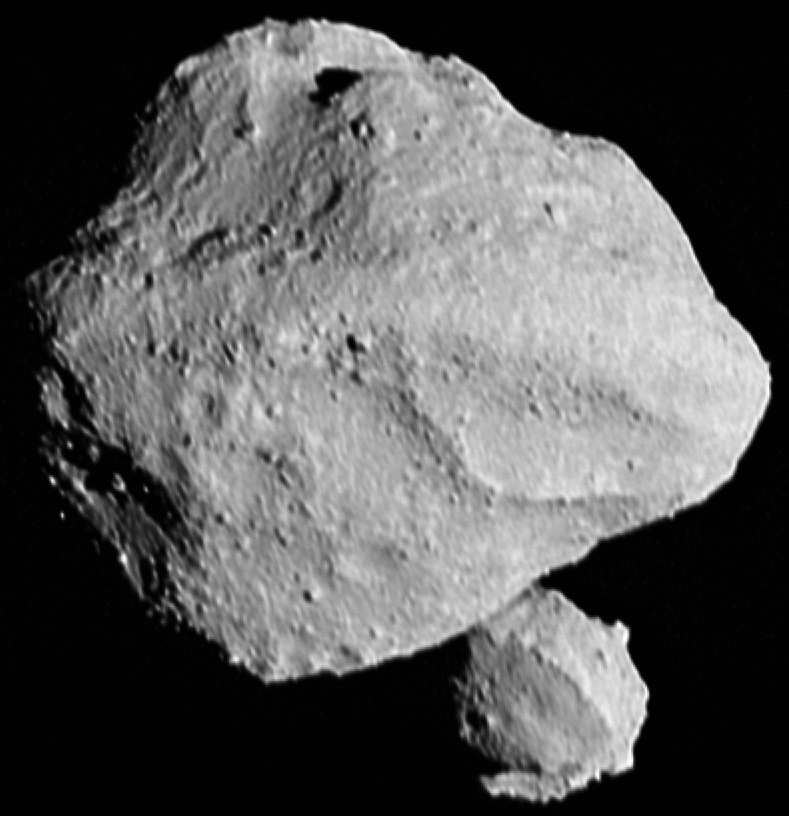
Dinkinesh and Selam
A small asteroid with a 'marvelous' surprise.
Dinkinesh is a small asteroid located in the main asteroid belt between Mars and Jupiter. On Nov. 1, 2023, NASA’s Lucy spacecraft flew by the asteroid, and sent back images showing that Dinkinesh has a moon, which has been named Selam. As Lucy continued to return data, the mission team was surprised to discover that Selam is a contact binary. In other words, it is made of two smaller objects touching each other. It's the first contact binary discovered orbiting an asteroid. In the first downlinked images of Dinkinesh and Selam, which were taken at closest approach, the two lobes of the contact binary appeared one behind the other from Lucy's point of view. Only when the team downlinked additional images, captured in the minutes around the encounter, was the true nature of this object revealed. “Contact binaries seem to be fairly common in the solar system,” said John Spencer, Lucy deputy project scientist, of the Boulder, Colorado, branch of the Southwest Research Institute. “We haven’t seen many up close, and we’ve never seen one orbiting another asteroid. We’d been puzzling over odd variations in Dinkinesh’s brightness that we saw on approach, which gave us a hint that Dinkinesh might have a moon of some sort, but we never suspected anything so bizarre!”
Vesta
Overview Vesta is the second most massive body in the main asteroid belt, accounting for almost 9% of the total mass of all asteroids. Only dwarf planet Ceres is more massive in that region of rocky debris between Mars and Jupiter. NASA’s Dawn spacecraft circled Vesta from July 16, 2011, until Sept. 5, 2012, when it departed and began its journey to dwarf planet Ceres. The giant asteroid is almost spherical, and so is nearly classified a dwarf planet. Unlike most known asteroids, Vesta has separated into crust, mantle and core (a characteristic known as being differentiated), much like Earth. Understanding why this is so was one of the objectives of the Dawn mission. The answer turned out to be that Vesta formed early, within 1 to 2 million years of the birth of the solar system. Short-lived radioactive material that was incorporated into bodies that formed during this epoch heated them to the point where—in cases like Vesta—the objects melted, allowing the denser materials to sink to the asteroid's core and the lower density materials to rise. Vesta has one of the largest brightness ranges observed on any rocky body in our solar system. The bright materials appear to be native rocks, while the dark material is believed to have been deposited by other asteroids crashing into Vesta. Scientists on the Dawn team estimate that about 300 dark asteroids with diameters ranging from one to 10 km (0.6 to six miles) hit Vesta during the last 3.5 billion years. This would have been enough to wrap the Vesta in a blanket of material about three to seven feet (one to two meters) thick. An extensive system of troughs encircles Vesta's equatorial region. The largest, named Divalia Fossa, is bigger than the Grand Canyon.
